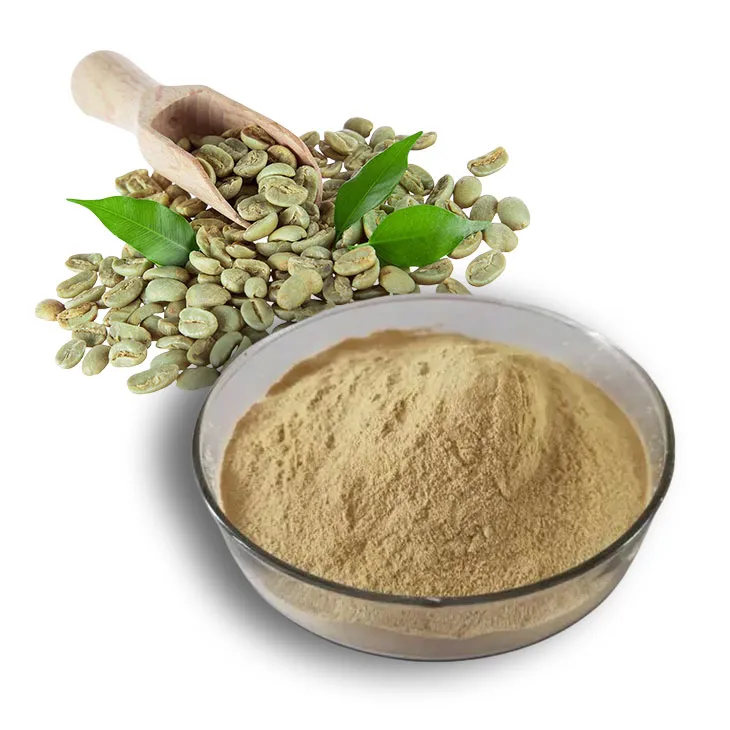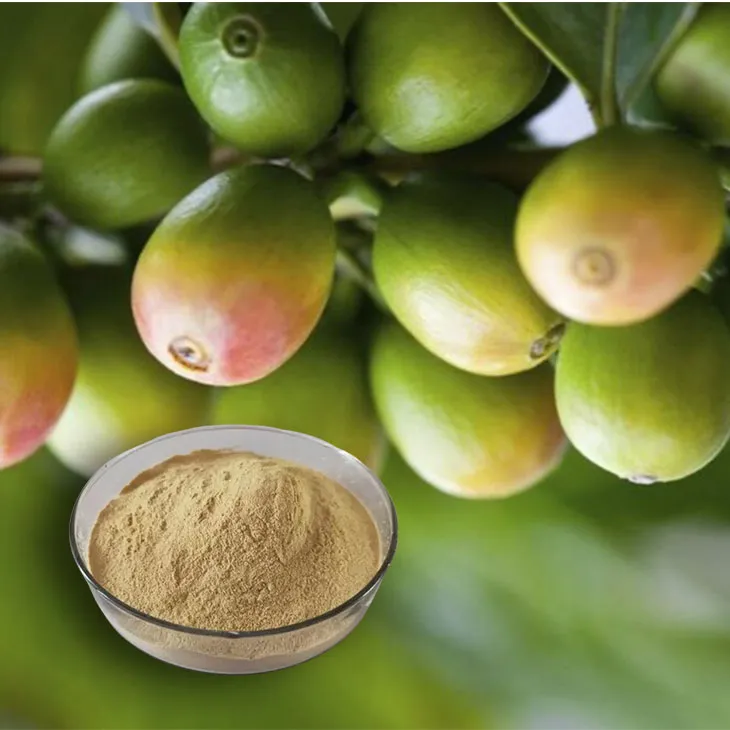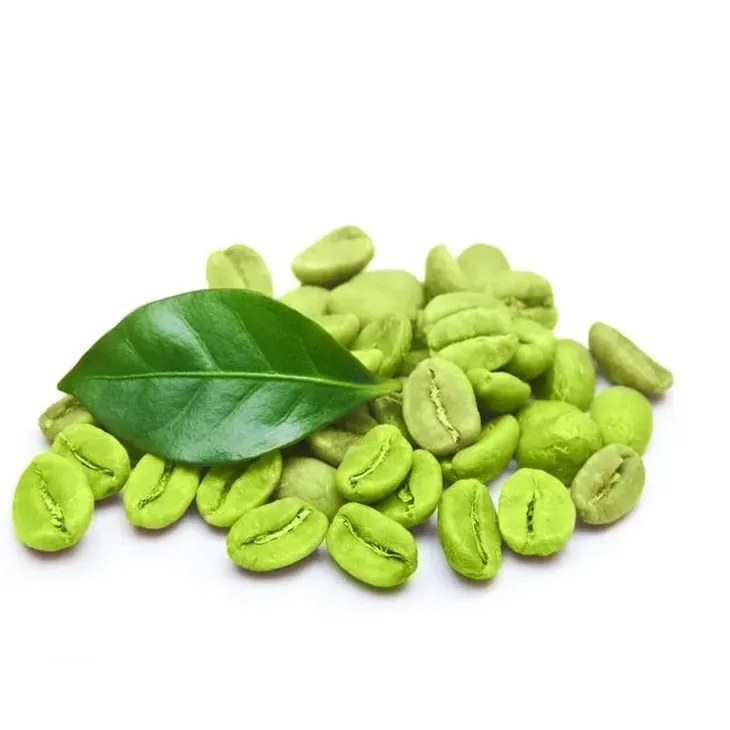- 0086-571-85302990
- sales@greenskybio.com
How to Extract Green Coffee Bean Extract from Plants.
2024-11-29

1. Introduction to Green coffee bean Extract
Green coffee bean Extract has gained significant popularity in recent years due to its numerous potential health benefits. Antioxidant properties are among the most notable features of this extract. These antioxidants play a crucial role in combating free radicals in the body, which are associated with various diseases and the aging process.
The extract is used in a wide range of applications. In the health and wellness industry, it is often incorporated into dietary supplements. It is also finding its way into the cosmetics industry, where it may contribute to skin health and anti - aging effects. Given its growing demand, understanding the extraction process from the source - green coffee beans - is of great importance.

2. The Source of Green Coffee Beans
Green coffee beans are the starting point for extracting the valuable extract. These beans are the seeds of the coffee plant. Coffee plants are highly sensitive to their growing environment and thrive in specific climates. Tropical and subtropical regions are the ideal habitats for coffee plants. For example, countries in South America, Africa, and Southeast Asia are major coffee - producing regions.
The quality of the green coffee beans depends on various factors related to their growth. These include soil quality, altitude, and rainfall. High - quality beans are typically grown in regions with rich volcanic soil, at appropriate altitudes (usually between 1000 - 2000 meters), and with a well - balanced rainfall pattern. The proper handling of these beans from the moment of harvesting is crucial for the extraction process.

3. Bean Handling before Extraction
3.1 Collection
The first step in bean handling is collection. Coffee cherries, which contain the green coffee beans, are harvested when they reach the appropriate level of ripeness. This can be a complex process as different coffee varieties may have different ripening times. In some cases, coffee cherries are hand - picked to ensure only the ripe ones are collected. This method is more labor - intensive but can result in higher - quality beans.
3.2 Sorting
After collection, sorting is essential. Sorting helps to remove any damaged, unripe, or foreign objects from the batch of coffee cherries. There are mechanical sorting methods available, such as using screens to separate beans based on size. However, in some high - end operations, manual sorting may also be employed to achieve a more precise separation.
3.3 Washing
Once sorted, the coffee cherries are washed. Washing serves multiple purposes. It helps to clean the cherries, removing any dirt or debris that may be present. Additionally, it can also play a role in the fermentation process. There are different washing methods, such as wet - washing and dry - washing. In wet - washing, the cherries are soaked in water, and the pulp is removed, leaving the beans. Dry - washing, on the other hand, involves drying the cherries first and then removing the outer layers.

4. Preparation for Extraction
4.1 Drying
After washing, the beans need to be dried. Drying is a critical step as it reduces the moisture content of the beans, which is important for their long - term storage and the extraction process. The beans can be dried naturally in the sun or using mechanical dryers. Natural drying may take longer but can result in beans with a more complex flavor profile. Mechanical drying, on the other hand, is faster and more controllable.
4.2 Grinding
Once dried, the green coffee beans are ground into a fine powder. Grinding is an important step as it significantly increases the surface area of the beans. A larger surface area means that more of the bean's contents can be exposed to the extraction solvent, leading to a more efficient extraction process. The fineness of the grind can be adjusted depending on the extraction method to be used.
5. Extraction Methods
5.1 Aqueous Extraction
One of the common extraction methods is aqueous extraction. In this method, water is used as a solvent. The ground green coffee bean powder is mixed with water, and the extraction takes place over a period of time. The temperature and the ratio of bean powder to water can be adjusted to optimize the extraction process.
However, aqueous extraction has its drawbacks. Since water is a relatively non - selective solvent, it may extract not only the desired components of the green coffee bean but also unwanted substances. These unwanted substances may include polysaccharides, proteins, and other compounds that may affect the quality and purity of the final extract. Additionally, the aqueous extract may have a relatively high water content, which may require additional drying steps in the purification process.
5.2 Organic Solvent Extraction
Another approach is the use of organic solvents. Organic solvents such as ethanol can be more selective in extracting the desired components from the green coffee bean. Ethanol is a popular choice as it is relatively safe to use in a controlled environment and can effectively dissolve the active compounds in the bean.
When using organic solvents, strict safety precautions must be taken as many organic solvents are flammable and may pose health risks if not handled properly. The extraction process using organic solvents typically involves mixing the ground bean powder with the solvent in a closed vessel under controlled temperature and pressure conditions. After the extraction, the solvent - extract mixture needs to be carefully separated from the remaining solid residue.
6. Filtration and Purification
After extraction using either method, the resulting liquid contains the Green coffee bean Extract along with the solvent and other impurities. Filtration is the first step in separating the extract from the solid particles. Filtration can be achieved using various types of filters, such as filter papers, membranes, or filter cartridges. The choice of filter depends on the nature of the impurities and the scale of the extraction process.
Following filtration, purification steps are carried out to separate the extract from the solvent and other remaining impurities. For aqueous extracts, methods such as evaporation or freeze - drying can be used to remove the water. In the case of organic solvent extracts, distillation or solvent evaporation under reduced pressure can be employed to separate the solvent from the extract. These purification steps are crucial to obtain a high - quality green coffee bean extract with a high concentration of the desired active compounds.
7. Applications of Green Coffee Bean Extract
Once the green coffee bean extract has been obtained through the extraction and purification processes, it can be used in a variety of applications.
- In the Health Products Industry: Green coffee bean extract is often used in dietary supplements. It is believed to aid in weight loss, although more research is needed to fully understand its mechanisms in this regard. The antioxidant properties of the extract also make it potentially beneficial for overall health, potentially reducing the risk of chronic diseases such as heart disease and diabetes.
- In the Cosmetics Industry: The extract is used in various cosmetic products. It may be added to creams, lotions, and serums for its potential anti - aging effects. It is thought to help improve skin elasticity and reduce the appearance of wrinkles. Additionally, its antioxidant properties may also protect the skin from environmental damage.
- In the Food and Beverage Industry: Green coffee bean extract can be used as an ingredient in functional foods and beverages. For example, it may be added to energy drinks or coffee - based products to enhance their antioxidant content and potentially provide additional health benefits.
8. Conclusion
The extraction of green coffee bean extract from plants is a multi - step process that requires careful attention to each stage. Starting from the proper handling of the green coffee beans, through the selection of an appropriate extraction method, and finally to the filtration and purification steps, each aspect plays a crucial role in obtaining a high - quality extract. As the demand for green coffee bean extract continues to grow in various industries, understanding and optimizing this extraction process will be essential for both producers and consumers alike.
FAQ:
What are the first steps in extracting green coffee bean extract?
The first steps involve starting with raw green coffee beans. After collection, these beans need to be sorted and washed.
Why is grinding the green coffee beans important?
Grinding the beans into a fine powder is important because it increases the surface area for extraction, which can make the extraction process more efficient.
What are the differences between aqueous extraction and using organic solvents?
Aqueous extraction uses water as a solvent. It can extract the green coffee bean extract but may also extract unwanted substances. Organic solvents, on the other hand, can be more selective. For example, ethanol can be used in a controlled environment to extract more targeted components.
What happens after the extraction process?
After extraction, the resulting liquid contains the green coffee bean extract along with the solvent. Filtration and purification steps are then carried out to separate the extract from the solvent and other impurities.
What are the applications of green coffee bean extract?
Green coffee bean extract can be used in a variety of applications, including in health products and cosmetics.
Related literature
- Green Coffee Bean Extract: Chemistry, Health Benefits, and Industrial Applications"
- "Extraction Techniques for Green Coffee Bean Bioactive Compounds: A Review"
- "Optimization of Green Coffee Bean Extract Production: A Comprehensive Study"
- ▶ Hesperidin
- ▶ Citrus Bioflavonoids
- ▶ Plant Extract
- ▶ lycopene
- ▶ Diosmin
- ▶ Grape seed extract
- ▶ Sea buckthorn Juice Powder
- ▶ Fruit Juice Powder
- ▶ Hops Extract
- ▶ Artichoke Extract
- ▶ Mushroom extract
- ▶ Astaxanthin
- ▶ Green Tea Extract
- ▶ Curcumin
- ▶ Horse Chestnut Extract
- ▶ Other Product
- ▶ Boswellia Serrata Extract
- ▶ Resveratrol
- ▶ Marigold Extract
- ▶ Grape Leaf Extract
- ▶ New Product
- ▶ Aminolevulinic acid
- ▶ Cranberry Extract
- ▶ Red Yeast Rice
- ▶ Red Wine Extract
-
Cranberry Extract
2024-11-29
-
Saffron Extract Powder
2024-11-29
-
Mango flavored powder
2024-11-29
-
Alfalfa Meal
2024-11-29
-
Passionflower Extract
2024-11-29
-
Saw Palmetto Extract
2024-11-29
-
Acerola Extract
2024-11-29
-
Aminolevulinic acid
2024-11-29
-
Curcumin Extract
2024-11-29
-
Lotus leaf extract
2024-11-29





















